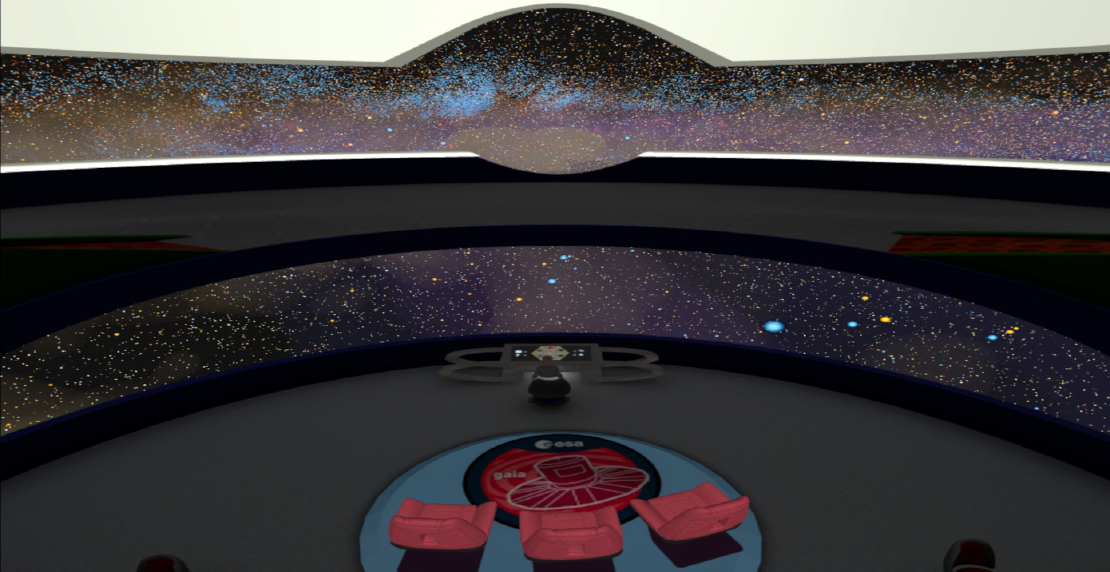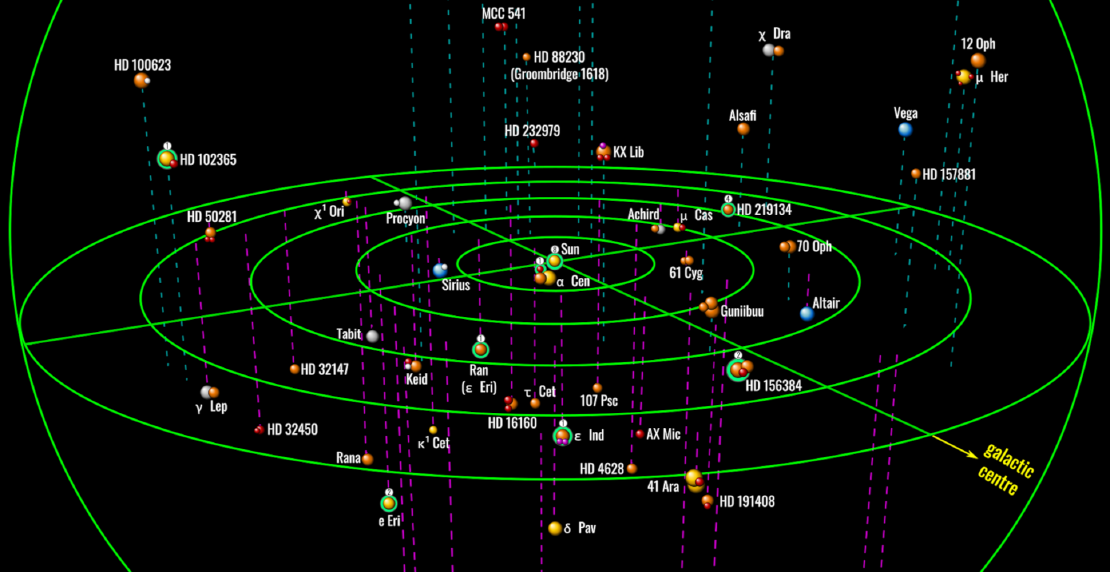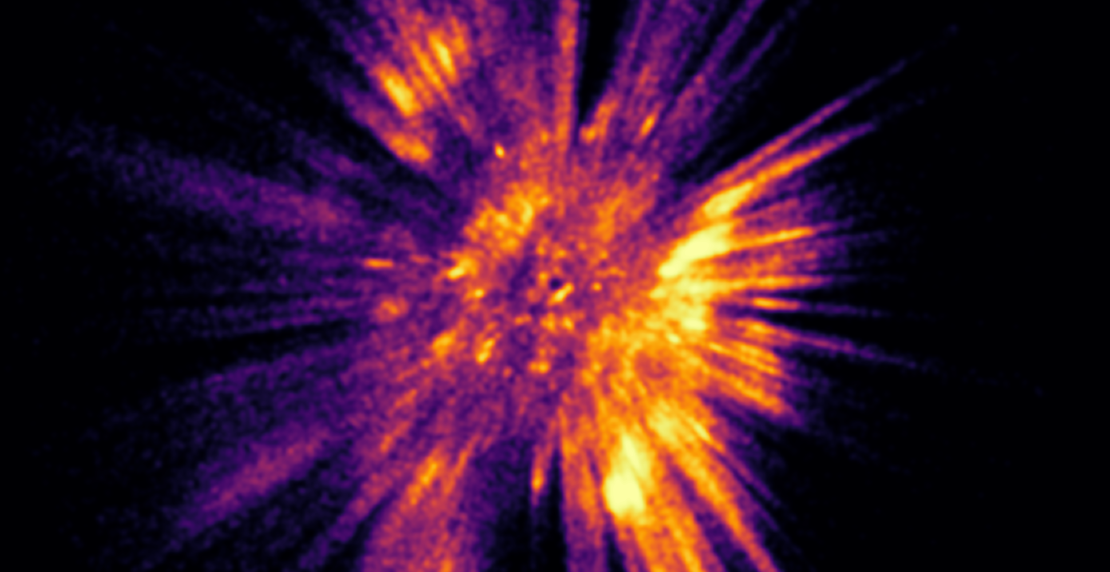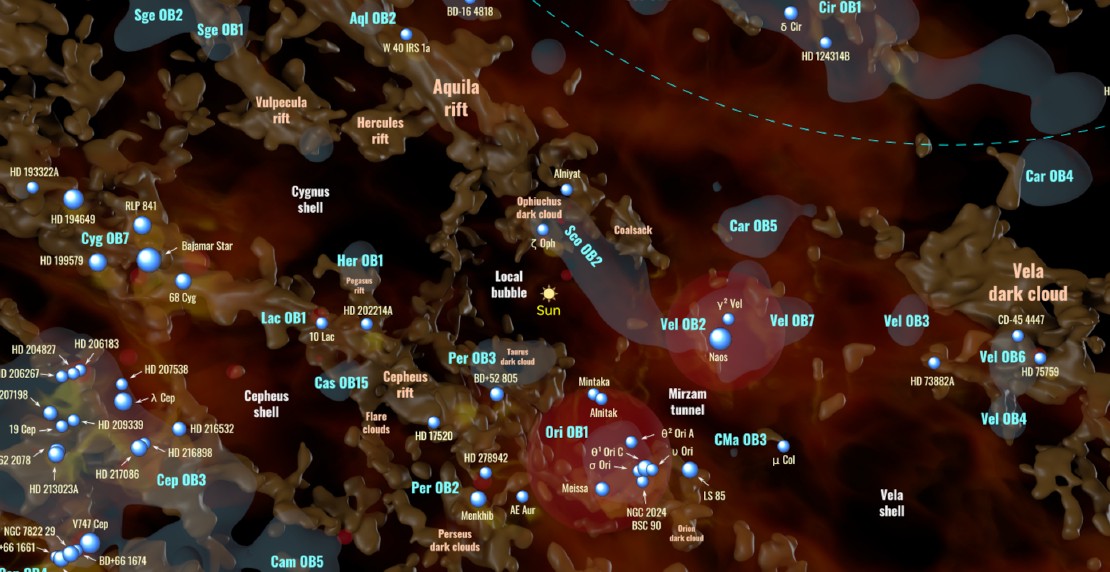The Virtual Starship
Traditionally astronomers have represented their data as two-dimensional images, often as Hammer-Aitoff projections of Earth’s sky. This tradition has continued even into the age of Gaia, which has provided us with vast 3D data sets.
In addition to the sky images, astronomers now sometimes use Gaia data to show top down orthographic maps projected from above the galactic plane, which is an improvement but still two dimensional.
This tradition is almost entirely created by the 2D world of scientific journals and websites in which most astronomers operate. It is not caused by technical limitations - not only have pdf documents and web sites supported high performance pseudo 3D graphics for some time now but virtual reality / mixed reality headsets now support true 3D parallax visualization with a separate image for each eye.
I have built a prototype virtual starship in Unity that will allow travelling to 40 different locations in the Milky Way, that will show immersive sky boxes and sky maps at each location.
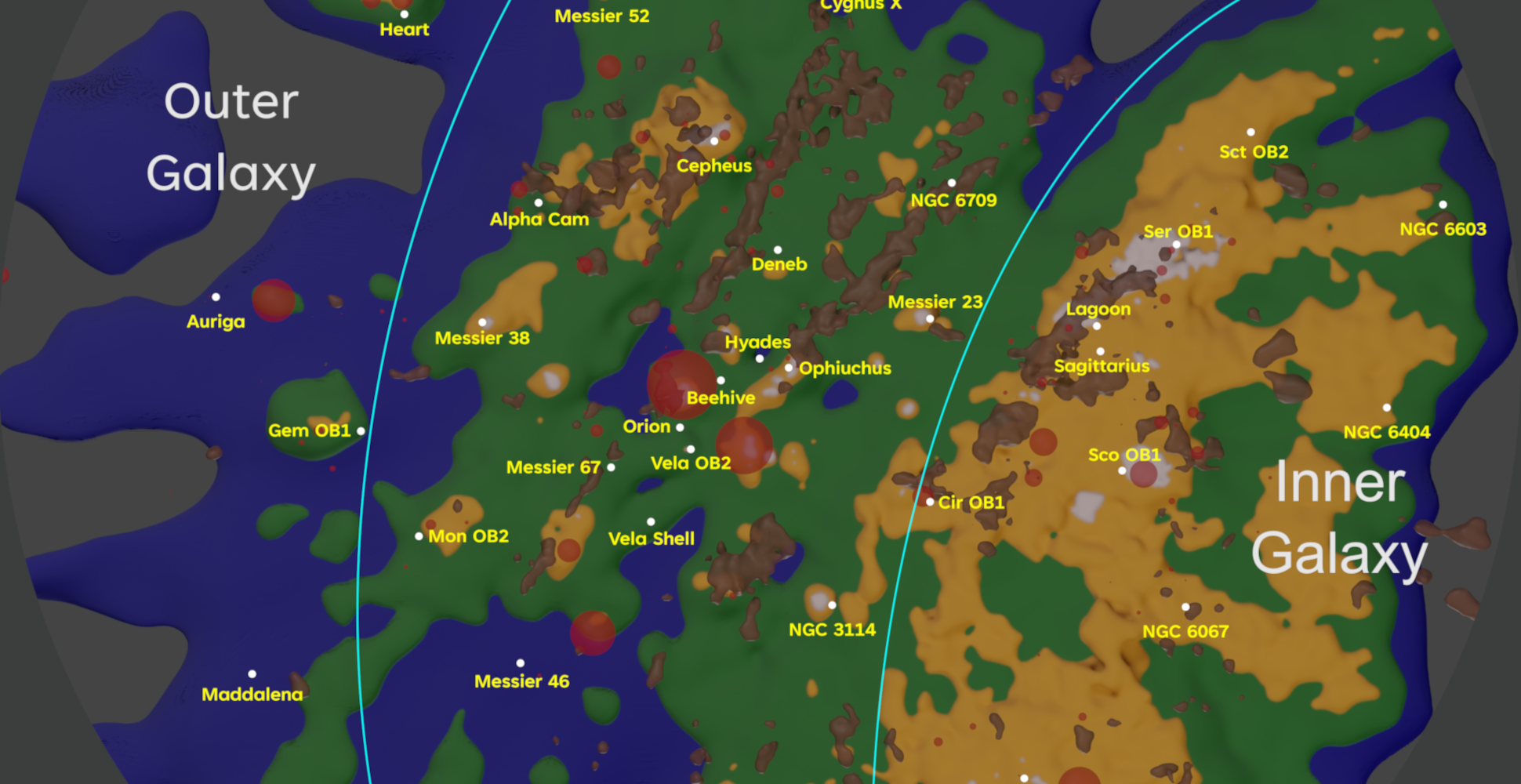
In addition to a navigation bridge, the starship also includes exhibition halls with 3D displays. As an example, here is a 3D Hertzsprung-Russell diagram that adds mass to the usual temperature and luminosity dimensions.

The virtual starship is open for tours. If you have a Meta Quest headset, contact me and I can add you to the app access list.
Related Posts
Gamifying the Nearest Stars
A long time dream of mine has been to have access to a catalog of all the nearest stars and brown dwarfs, with all their properties: temperature, size, mass and exoplanets.
Read moreMRI Scans of the Milky Way
The European Space Agency’s Gaia Mission has surveyed the 3D positions of almost 2 billion stars, creating a point cloud that looks more like a sand storm in the Sahara desert than a traditional star map.
Read moreAn improved hot star map
The European Space Agency’s Gaia Mission has revolutionized astronomy in many ways. As just one example, the Gaia Mission has provided the first accurate survey of stars in the galactic plane out to about 5 kpc.
Read more